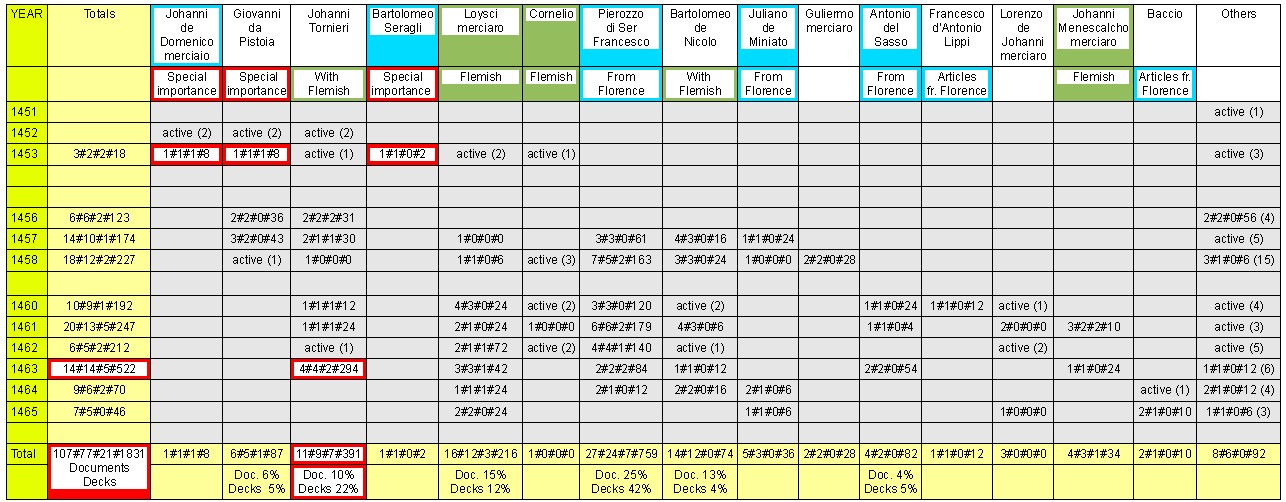|
|
 |
Tarot News - September 2013 - Esch report (provisional analyses)

Some Notes
The reported documents have specific states.
- some documents contain something with cards, but not with Trionfi decks (these are not counted on the table (and are not part of the 107 Trionfi card documents), beside the years, in which the merchant was active with cards. In such a case "active" is written and a number in brackets () and the number tells how much documents testify the activity.
- Some documents contain something with cards and with Trionfi cards. Then it is regarded as a Trionfi note and counted on the table.
- Some documents contains only something about Trionfi cards. Then it is taken as Trionfi deck document and also counted on the table.
If it is a Trionfi document (as in the case of 2. or 3.), it might have the numbers of the related Trionfi decks and it might have a price (that what the custom official thought to be the correct price, mostly that of a group of cards; from such documents one might calculate the single deck price, but occasionally it's insecure or impossible).
From 107 documents with "Trionfi" 77 have a number of the related Trionfi decks (so roughly 72 %) and 21 have a price (so 20%), but not all documents with price tell, how much Trionfi decks were imported, and occasionally Trionfi cards and other playing cards are contained both in the price, leaving insecurities in the calculation.
In the table the form ...
number#number#number#number
... is chosen. The first number tells, in how much Trionfi documents a merchant appeared in a given year. The second number gives, how much of these documents contained a number for the imported Trionfi decks, and the 3rd number tells, how much of these documents contained a price. The fourth number tells then the number of decks, as far this is really recorded (in 72% of the cases, the other are noted with "0"). So the final number, which is given as the "Total" (1831 decks between 1453-1465), is naturally not the true number of imported decks, but below this true number.
Some fields are marked with "red".
These fields relate either to persons, which are already known by earlier researchers (Johanni de Domenico merciaio is suspected to be identical to Giovanni di Domenico, a playing card producer in Florence; Bartolomeo Seragli is clearly the merchant Bartolomeo Seragli from Florence, who commissioned (likely) 2 Trionfi decks in Florence from Filippo di Marco in March 1453 - possibly the 2 imported decks in Rome are the same, which were produced by Filippo; Giovanni da Pistoia had been known already from the Esch report 2007 and was researched by Franco Pratesi) or they relate to a not clear document of the trader Johanni Tornieri, which contains as very cheap an unusual price for Trionfi decks.
Fields marked with "blue" relate to Florentine imports or Florentine influences, fields marked with "green" points to recognized Flemish merchants or traders, which accompanied the Flemish merchants.
A closer report is in preparation. The momentary table presentation might contain some counting errors, it's just "provisional".
|
|
 |
|
|




